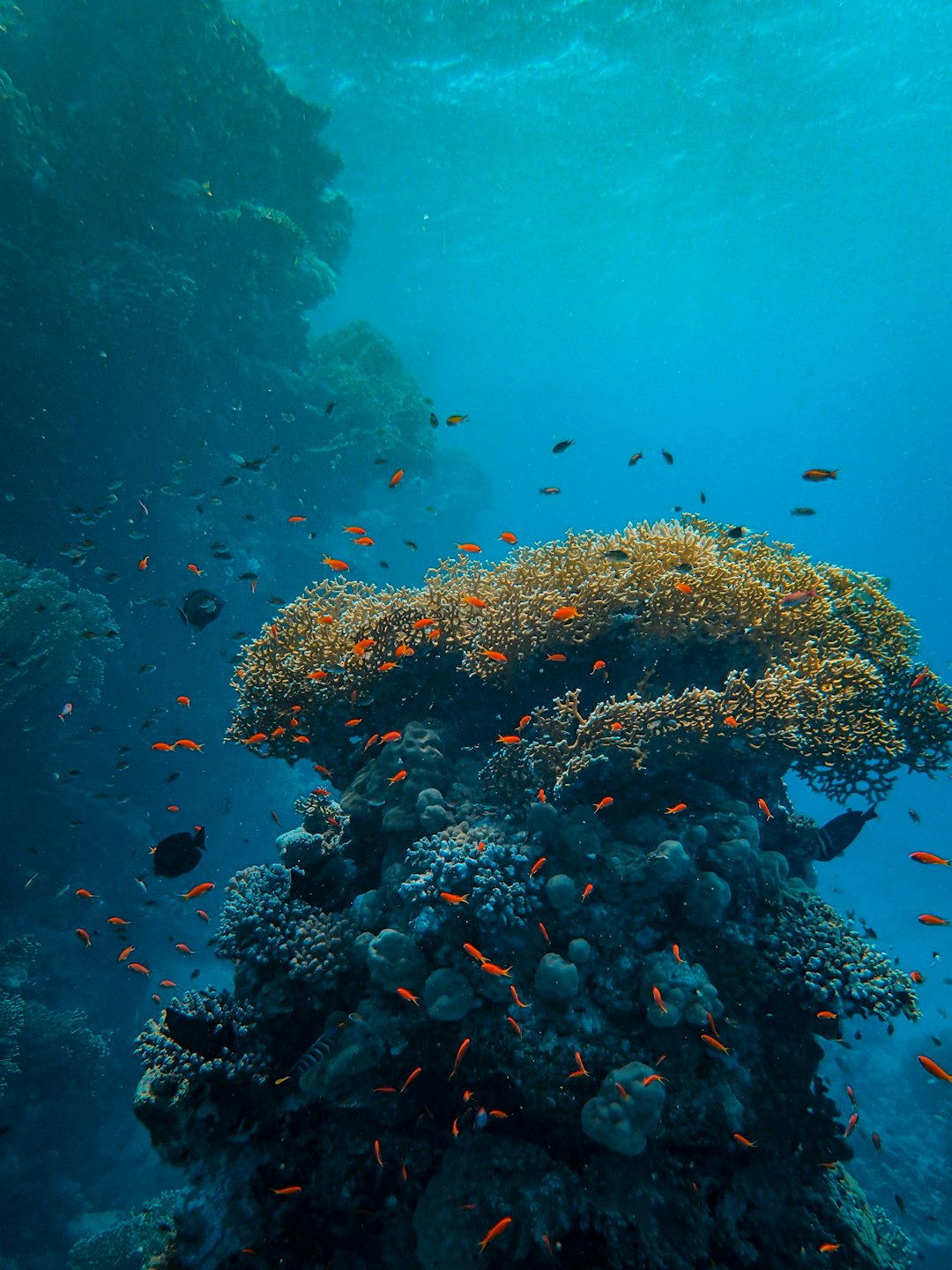Australia’s Great Barrier Reef inspires awe and sparks curiosity around the world. Supporting one of the world’s liveliest ecological communities, the reef is a critical pillar of its local economy and drives both tourism and research. However, this incredible natural wonder is in grave risk. More than two-thirds of the reef’s mass sits on the brink of long term collapse due to mass bleaching events; three of which have occurred in the past four years alone. While this desperate situation may appear incredibly discouraging, scientists and conservationists have been inspired to turn to a unique and unexpected tool: music.
Inside the Reef
Analyzing the Great Barrier Reef’s place in aquatic life is important to understanding the methods that can be used to help defend and repair it. The Great Barrier Reef is the world’s largest living structure, covering 133,000 square miles off of the Queensland coast of Australia. A reef is an aquatic ridge composed of layers of stony corals that leave behind skeletons of calcium carbonate, which accumulate over time to become large formations. Formed by more than 3,000 individual reef systems, the Great Barrier Reef provides a crucial and complex habitat that supports the lives of sea turtles, colorful reef fish, more than 130 species of rays and sharks, and 400 varieties of hard and soft corals. Coral reefs cover just 0.1 percent of the ocean floor, but house and support 25 percent of marine species worldwide, including a number of endangered and threatened species.
In addition to being a critical component of underwater ecosystems, the Great Barrier Reef is a major draw for tourism and supports a lively seaside economy. Travelers sustain a number of businesses, including tourism agencies, hotels, restaurants, and local shops. The unique nature of the reef also draws researchers interested in better understanding aquatic life from colleges and universities around the world. The Great Barrier Reef is an awe-inspiring epicenter of natural beauty, academia, economic activity.
However, this irreplaceable natural resource is facing an existential threat. Australia’s Great Barrier Reef is very vulnerable as a result of climate change and local ecological factors. Climate patterns continue to change water body temperatures across the world. One third of coral species in the reef are at a high risk of extinction due to the damage caused by increased water temperatures. Experts predict that an additional two degrees Celsius increase in water temperature could kill 99 percent of the ocean’s coral ecosystems. Maintaining a consistent temperature is vital to the reefs. Under the stress of warming water temperatures, coral eject the algae that live in them, a condition referred to as “bleaching.” These algae, however, are critical to the health of the coral as they provide nutrition necessary for the metabolism of coral. Over the past 30 years, the sea surface temperature of the Great Barrier Reef has already risen about 0.4 degrees Celsius. If the warm water conditions last for an extended duration, the coral can experience damage beyond repair. Additionally, coral reefs have struggled with damage from overfishing and environmental mismanagement. Overfishing has caused imbalances in the populations of marine species and development along the shore has disrupted aquatic ecosystems. Under current projections of lack of effective intervention, scientists anticipate that 70 to 90 percent of the world’s reefs will disappear by 2050, including the magnificent Great Barrier Reef.
Time is crucial in the fight to repair damaged coral reefs like the Great Barrier Reef. Historically, bleaching events occurred infrequently, allowing reefs an adequate recovery period. However, as a result of increased heating of the world’s waters, these are occurring at almost twice the prior frequency. Water temperatures globally are increasing as oceans absorb excess heat caused by greenhouse gas emissions. In recent history, bleaching events occurred approximately every 10 years, but are now being observed at an unprecedented frequency. Damage from these bleaching events is long-lasting due to coral’s slow growth. This sharp increase in occurrences has drastically narrowed the recovery window available to these fragile ecosystems, preventing full recoveries. Researchers anticipate bleaching to occur annually in the coming decades if action is not taken to avert this fate. With our ever increasing understanding of the complexities of the Great Barrier Reef, we have a great responsibility to take direct actions now to defend this ecosystem before the damage becomes irreparable.

Bioacoustics
Perhaps the most surprising approach to revitalizing the Great Barrier Reef relies on a naturally occurring phenomenon: music. Termed “bioacoustics,” this recent innovative response to reef destruction allows conservationists to encourage reef restoration in a less invasive way. Simply put, bioacoustics are the sounds produced by living organisms.
Steve Simpson, a professor of marine biology and global change at the University of Exeter, explains. “Listening to a coral reef is like listening to an orchestra of biological sound–fish produce popping, whooping, and trumpeting sounds to warn each other of predators, to call each other when they find food, and to impress one another during the breeding season.” Much like the symphonies that fill our concert halls, nature provides a medley of sounds that combine to create a rich and lively element of underwater life.
In a surprising connection, bioacoustics are unlocking a way to establish community, a vital aspect of any thriving ecological environment. Reef recovery requires a flourishing community of living organisms, such as young fish and larvae, who are drawn to coral reefs by the emitted sounds. Acoustic indicators aid young fish in the orientation and settlement into a reef ecosystem, but scientists have observed 75 percent fewer acoustic sounds in degraded reefs. This change has led to almost 40 percent less settlement of young marine animals in damaged reefs than would be expected in healthy reefs.
Mimicking lively aquatic communities, “soundscape enrichment” is being utilized to remedy decreased settlement. Soundscape enrichment uses recordings taken from thriving marine coral reef communities to increase the amount of fish as well as the algae that they graze on in damaged reefs. Ocean acoustic tools can increase the chances of young marine life recruitment to threatened reefs, increasing the ecological factors that help to revitalize the challenged environment.
Led by Tim Gordon, a doctoral student at the University of Exeter, a group of marine biologists have developed a specific method to implement soundscape enrichment technology in the Great Barrier Reef. They installed underwater speakers near the damaged portions of the reef, playing symphonies of life into the underwater abyss. Researchers playback recordings of sounds from other unharmed portions of similar reef systems. A melody of whoops, grunts, crunches, scrapes, and snaps signifies a bustling community of life and invites prospective residents to the reef. After deployment in November 2017, there was a 50 percent increase in the observed number of individual fish present in the observed damaged reef.
Into Action
While “acoustic enrichment” is a fascinating tool in the restoration efforts of the quickly disappearing coral reefs, it is not preventative nor entirely restorative. A tool to attract young fish back to damaged reefs is useless or even harmful if the reef’s new residents will not be able to sustain themselves in the barren environment. To truly capitalize on this innovation, additional efforts are necessary to protect and restore the reef ecosystem.
The Great Barrier Reef is in a fight that will require much broader action. Experts such as Professor Andrew Baird from the ARC Centre of Excellence for Coral Reef Studies at James Cook University remarked that “we've gotten to the point now where local solutions for the reef are almost pointless — the only thing that matters is action on climate change.” Global action to mitigate carbon emissions, pollution, and unsustainable resource depletion seem almost essential to meaningfully protect the reefs. While local and national level responses such as non-profit led reef outplanting, corporate intervention, and fundraising to support scientific research and legislative lobbying are invaluable to raising public awareness, the impacts of those actions pale in comparison to unified global action on climate change.
When water temperature increases can be tempered, outplanting reefs with infant corals grown in onshore nurseries and attracting marine life back into recovering portions of the reef will be astronomically more beneficial than they can ever be today. Policies like Australia’s Reef 2050 Plan have already increased water quality in the surrounding reef area by reducing pesticide and dissolving inorganic nitrogen. Both are effective, but their impacts are magnified in conjunction with broader environmentalist policies that stabilize reef temperatures and minimize bleaching.
Innovations on the margins are valuable and demonstrate the power of ingenuity in combating climate change. But, in order to save critical ecosystems and natural wonders of the world, that same ingenuity needs to be present in global climate regulation. Otherwise, there may not be any reefs to repopulate with our growing technological arsenal.





